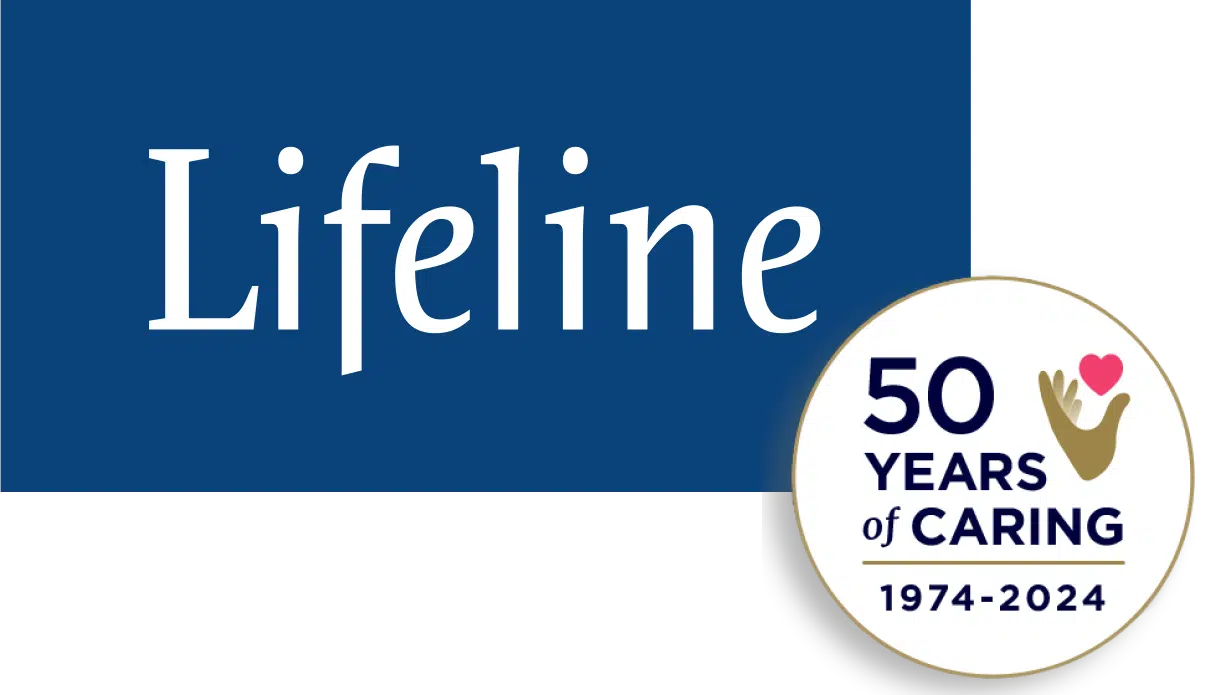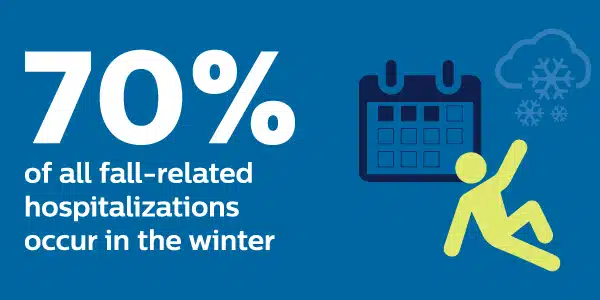Winter Safety Tips (2024 Updated Guide)
Author: Lifeline Canada
Date: 4 October 2023
When falling leaves turn to falling snow and ice, older adults are more susceptible to injuries from falls. We’ve put together a complete guide to help you or your loved ones reduce the chance of falling during the winter.
What are the common causes of winter falls?
Hypothermia
Older adults are particularly susceptible to hypothermia which can lead to dizziness, confusion, shallow breathing and a slow or irregular heartbeat, resulting in an increased risk of falling.
Sub-optimal vitamin D status
The reduced number of sunlight hours in winter can lead to lower vitamin D levels that reduce the muscle and bone strength necessary to deal with tougher walking conditions and minimize the chance of injury after a fall.
Bringing winter risks indoors
Winter boots can track snow indoors where it melts and can lead to a fall.
Reduced sense of touch
Age-related conditions such as poor circulation, arthritis and diabetes can cause a decreased sense of touch that can interfere with the ability to “feel” ground conditions through winter boots.
Vision problems
Visual acuity diminishes with age and older adults have more difficulty distinguishing hazardous patches of snowy or icy ground that can appear to be nothing more than varying shades of white and grey. In addition, average light levels are lower in the colder months, further impeding the ability to see risks and negotiate them safely.
Related: Home safety tips to reduce falls risk
6 Winter Safety Tips You Should Know
To reduce the chance of falling in winter, at-risk patients should take the following steps:
- Get traction
The best defence against falling when it’s snowy and icy outside is to wear boots that provide a good grip on the ground. It’s easier said than done; one study of winter footwear by the Toronto Rehabilitation Institute’s WinterLab found that only 8% of almost 100 pairs of “winter boots” met their minimum slip resistance standard using the MAA (Maximum Achievable Angle) testing method. - Stay fit and active
When it’s cold outside, it’s tempting to stay indoors and hibernate. However, an older person’s inactivity can lead to a loss of muscle strength that may lead to a fall. - Eat well
Eating well-balanced, nutritious meals and foods rich in Vitamin D and calcium will help prevent dry, tight skin and minimize loss of bone density. - Prevent hypothermia
Dress warmly in layers when outdoors and be sure to stay hydrated to help blood circulation reach extremities. - Be aware
Older adults should avoid rushing and watch for hazards such as icy patches and uneven snow. - Be prepared
Seniors need to acknowledge the heightened risk they face in winter and think about how they would get help if they fall. Implementing a fall alert system can give you the peace of mind that you will receive the help you need if a serious fall occurs. Lifeline’s new On the Go mobile service is the perfect companion for older adults when they are facing the wilds of winter because it can call for help wherever your patient is located.1 For seniors who are at home, HomeSafe or HomeSafe with AutoAlert can provide similar protection.
What You Should Do Now:
Here are 5 ways we can help you or your loved one live safer and more independently at home as long as possible:
- Get our latest tips, tools and resources straight to your inbox. Sign up for our monthly newsletter.
- Not sure if the time is right for a medical alert service? Take this quick assessment to find out.
- If you would like to learn how to live a healthier and safer lifestyle, go to our blog or visit our resources section, where you can read and download guides.
- Wondering which medical alert system company is the best for your needs? We’ve put together a guide comparing the best medical alert systems for you.

